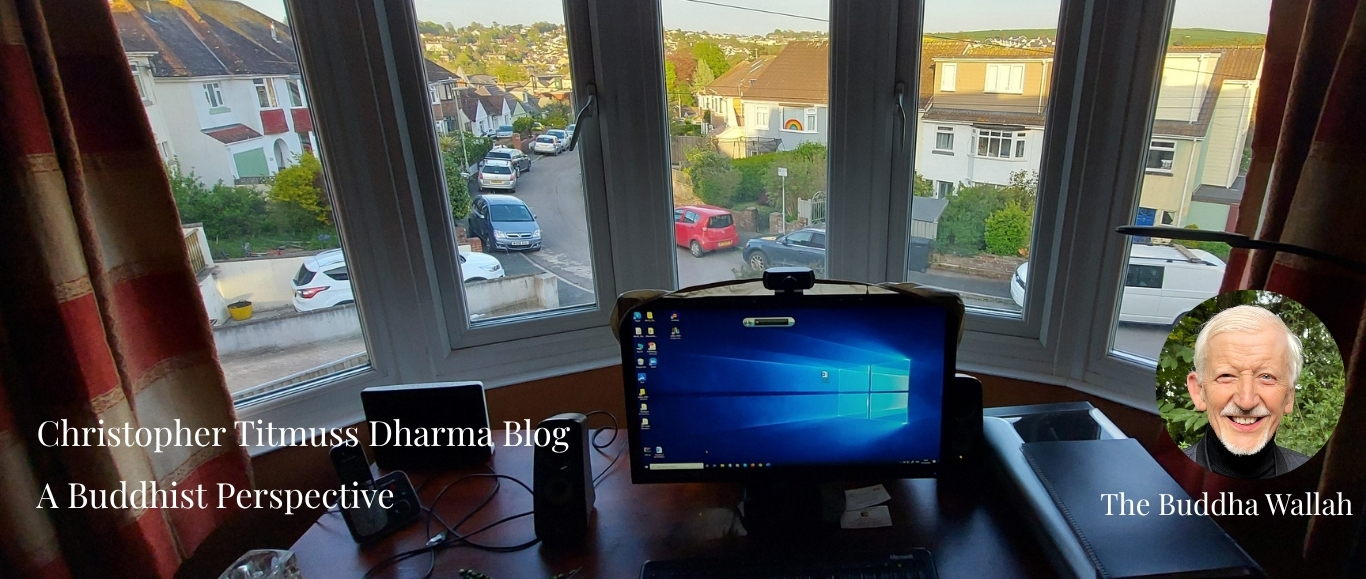LAST BREATH AWARENESS
Kevin Quiles.
Outskirts Press. 2017
ISBN: 978-1 4787-3076-7
130 Pages
$13.43
(Support your local bookshop. Simply provide ISBN number to order or go to online bookshops)
We employ existence and desire to avoid the exploration of death, of our transient presence in this world. We confine death to the margins of existence.
We make our life busy, preoccupied, if not obsessive, about being successful in the material world. Money and things mean a lot to us, as well as approval and recognition from others. It is far too easy for our life to circulate around such priorities. With the passage of the years, perceptions of life begin to change.
Instead of an endless future, we pass the midway point and see the gradual downhill slope to death. We know not the hour, nor the day. Inwardly, nothing much has changed. Feelings, thoughts and interests, along with the general sense of self, seems much the same as when we were in our mid-20s. The body communicates a very different picture – a slowing down, wrinkles, loss or whitening of the hair and more health issues and health check-ups. We need to make sure of securing enough sleep.
Death can still get pushed away even though it gets closer day by day, even as we act to postpone death as much possible. We do not know what percentage of our life is over.
Kevin Quiles, the author of Last Breath Awareness, has written an important text. He believes, and rightly so, that we must bring an enquiry into ageing, pain and death rather than live in avoidance or denial of its approaching reality. The title of his book offers a reminder of a regular reflection of Buddhist monks. The monks engage in their meditation practices with various intentions. One of them includes a training of the mind to remain calm with clear awareness of the very last out breath of their existence.
The chapters of the book offer solid themes to ensure that life-and-death come together as a mutual and supportive exploration.
Not surprisingly, Kevin addresses impermanence, resistance to death, reflection, the problem of clinging on to life and the importance of mindfulness and meditation in relationship to the end of life. There is the potential for a deathless realisation.
In the last section of his book, he offers a 30-day workbook on ‘conversing’ with death. Every day, participants can explore the questions and exercises in this section. The questions contribute to an embrace of the last period of life with its conclusion of the fading away of all the faculties of heart, mind and body.
Kevin certainly has the authority to write on such a theme with 15 years of hospice service, and years as a psychotherapist working with the traumas and the dramas of the daily lives of his clients. The book allows readers to have their own views about what happens, if anything, after death.
A bold and adventurous relationship with death takes the sting out of death, as the sages will say. The book encourages readers to look into the eye of the tiger of death and see that the tiger has no teeth. Daily practices can offer support for embracing death. There is the daily practice of recognising arising, passing and ending. This contributes to knowing that death belongs to birth and life. Kevin encourages the skilful use of imagination to prepare for death.
Birth, life and death form a threefold process. There is the birth and death of every single day, the beginning and ending of relationships and the start and finish of all experiences. We need the opportunity to reflect on death, to talk about death together and visit cemeteries. Some people reject this approach. They regard meditations on death as morbid. A morbid approach to death comes through avoidance, denial and fear. There is fear of loss, fear of the dying process and fear of extinction. The self has a strong interest in its own perpetuation. There is no morbidity for those who explore life and death.
Last Breath Awareness ought to be of interest to all of us. We need the tools, the practices and especially the wisdom to put our life into a proper perspective in the great movement of evolution. The book also supports the work of councillors, doctors, the clergy, social workers and families dealing with death. Death is not a fearful phenomena but one of the countless expressions of life enabling change to take place.
In conclusion, I would like to add that Kevin kindly invited me to write a 1200-word Foreword for his book on the approach to death in the East. Dr Stephen Howard has written a forward on the way death is often perceived in the West.

